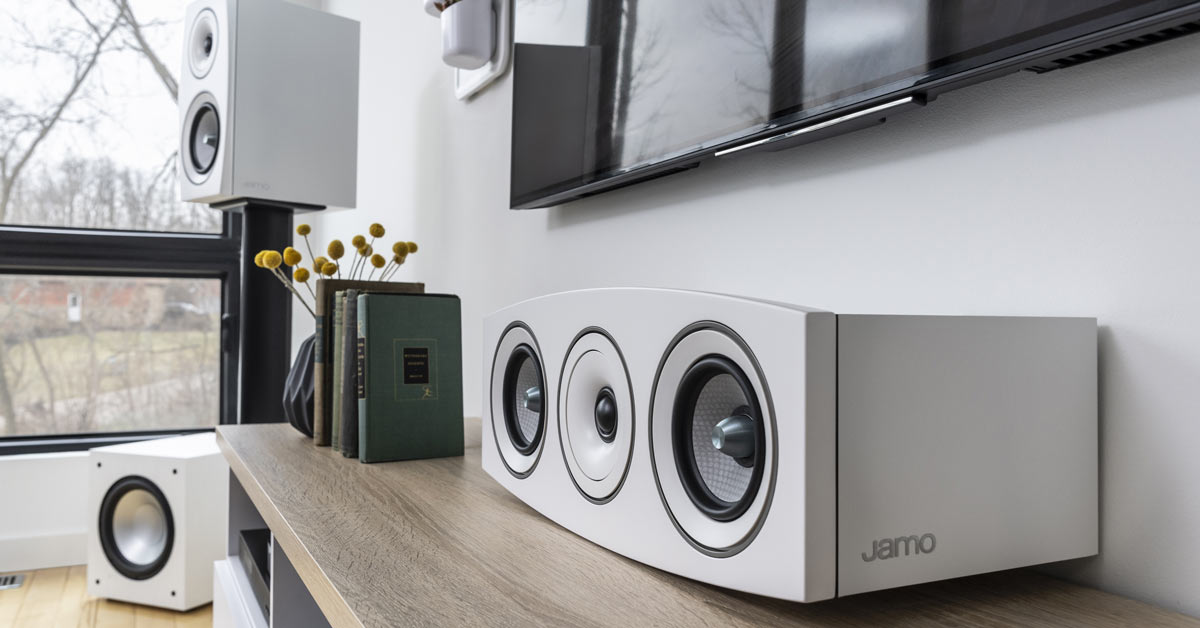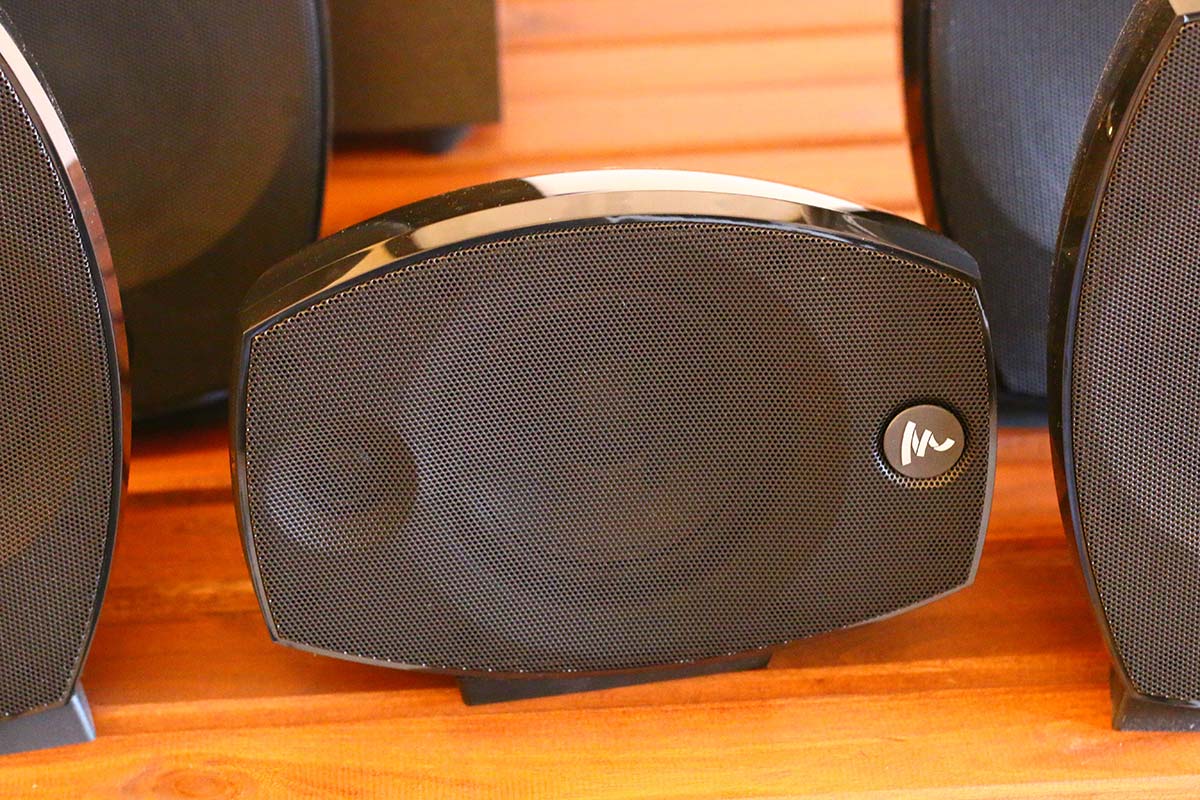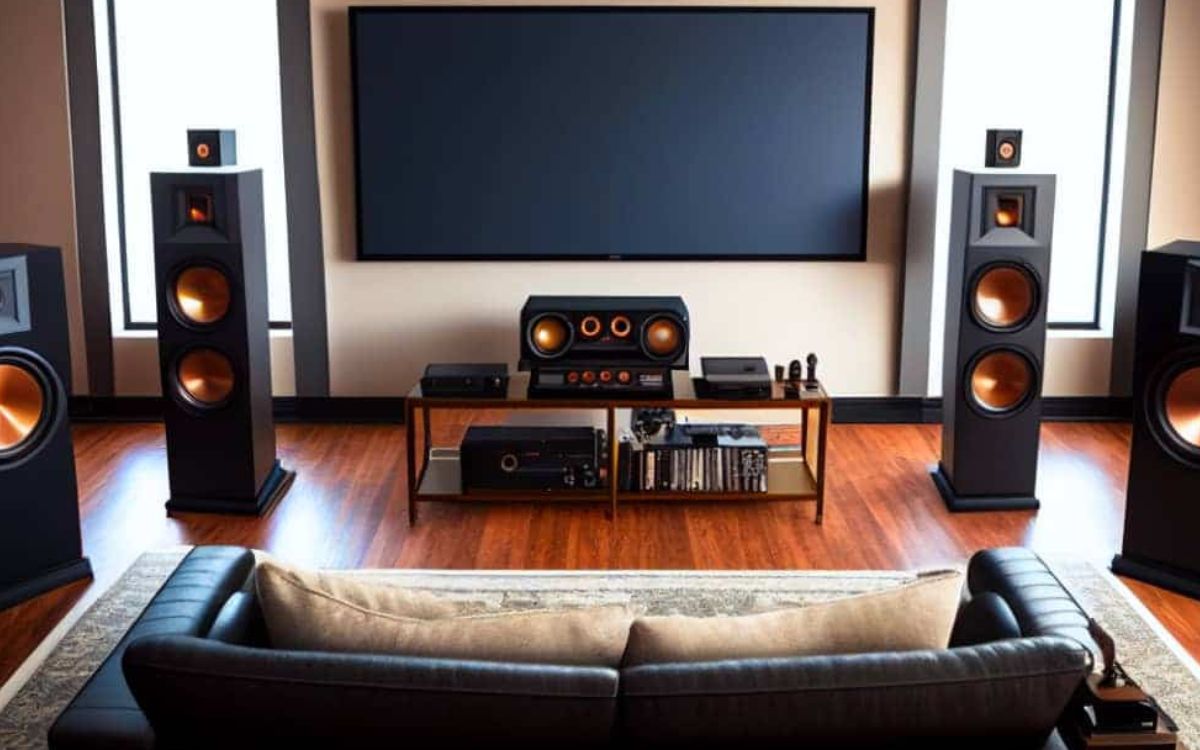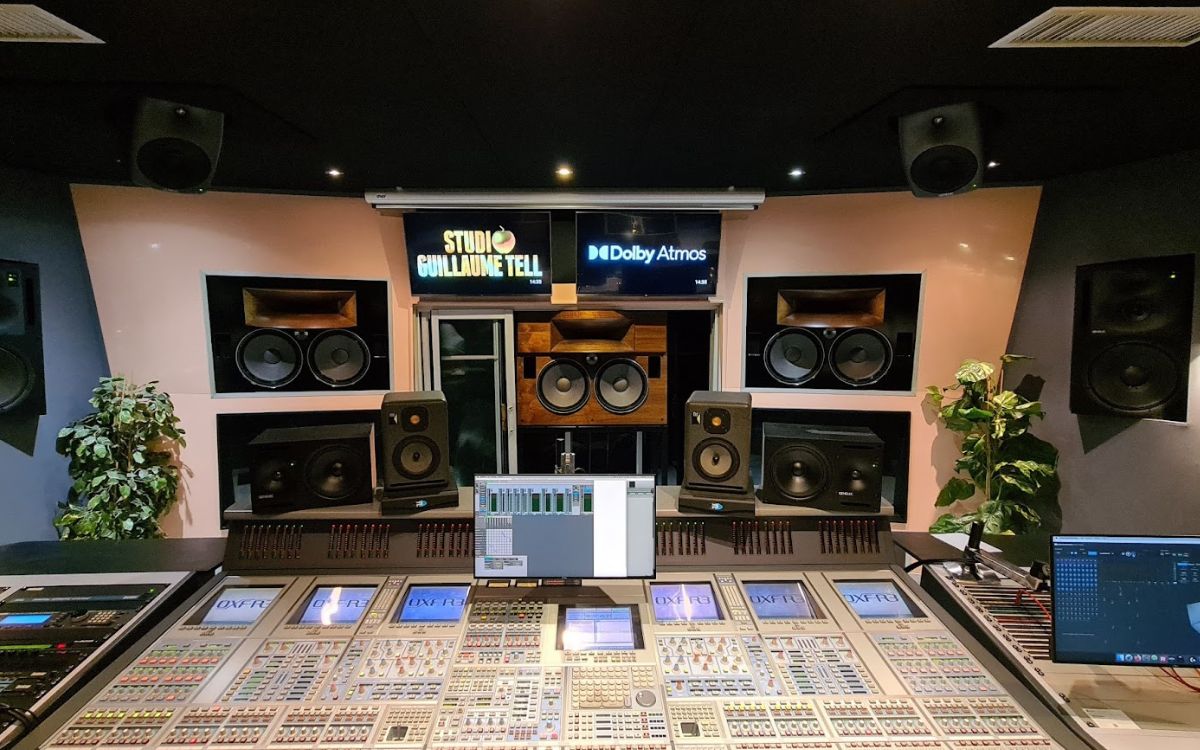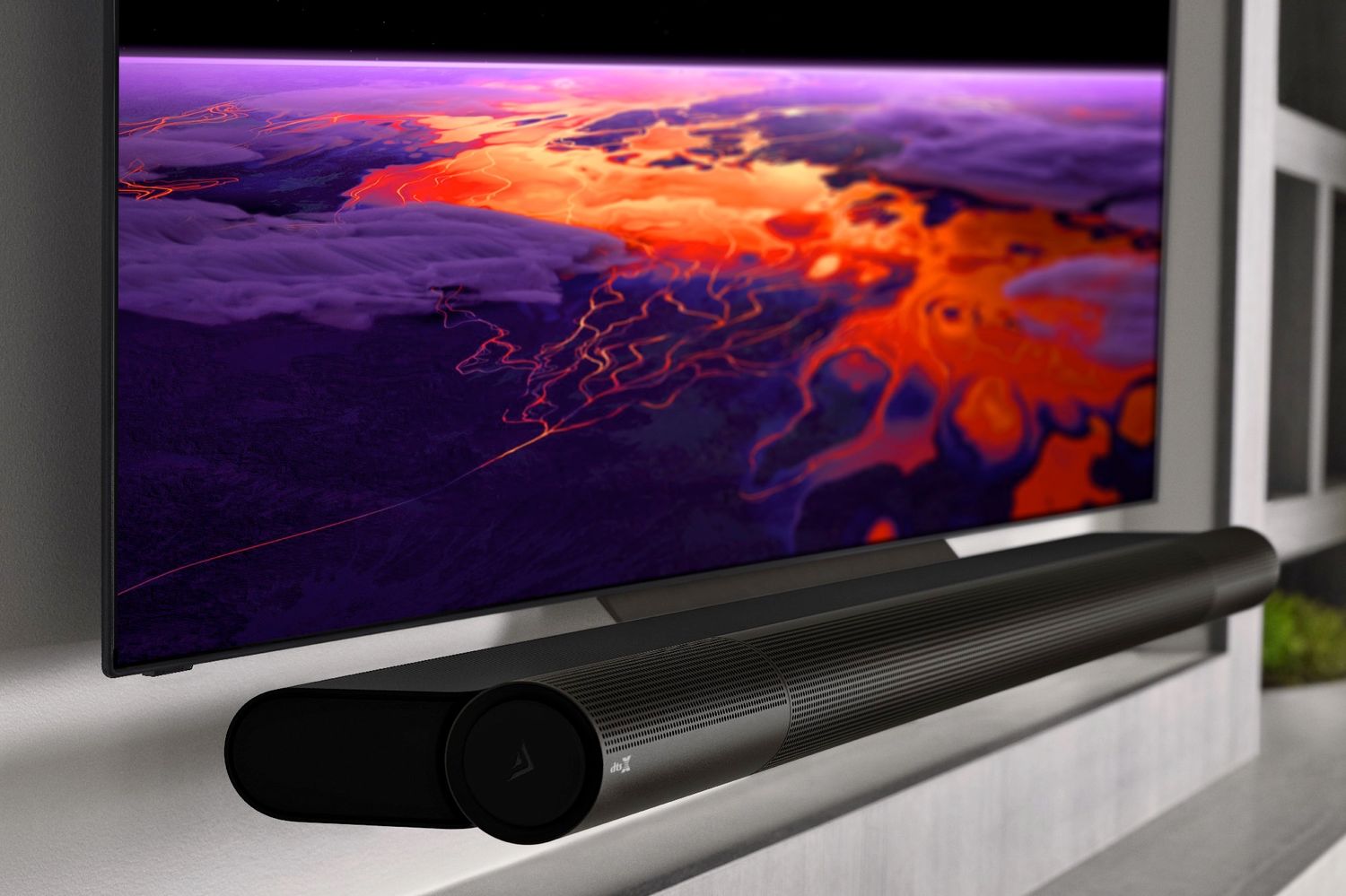Home>Production & Technology>Surround Sound>What Is 3.1 Channel Surround Sound
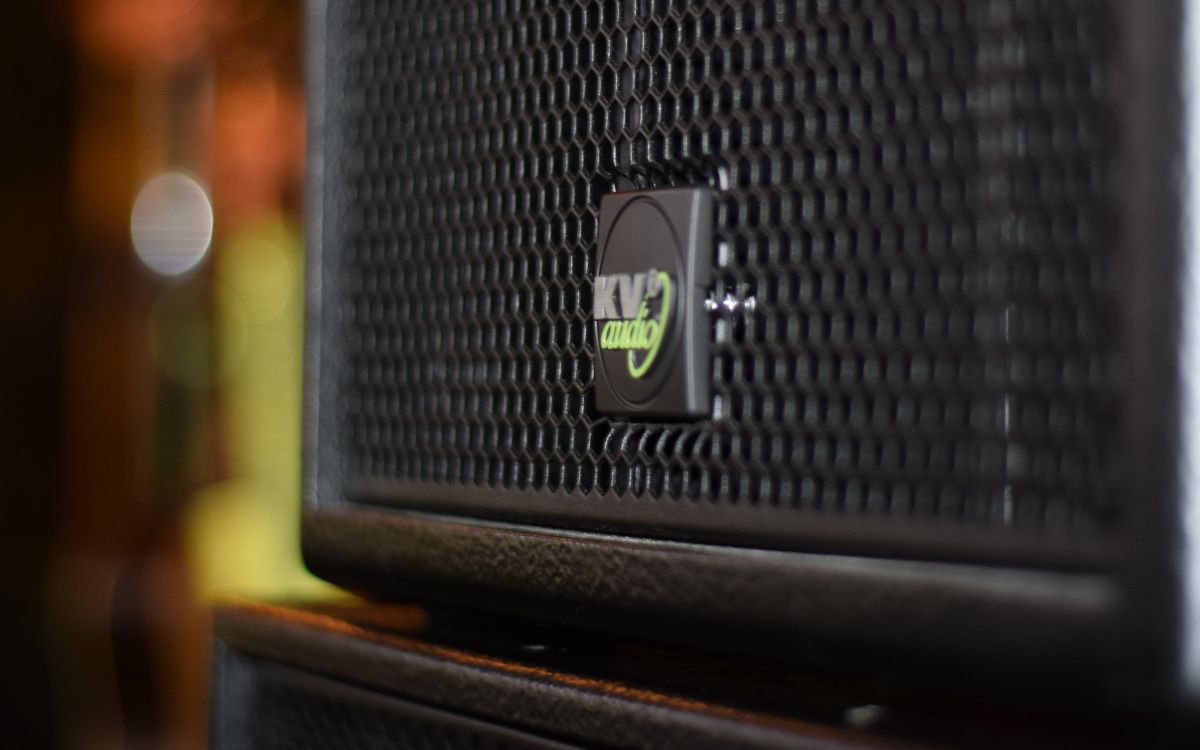

Surround Sound
What Is 3.1 Channel Surround Sound
Modified: January 22, 2024
Discover the incredible world of 3.1 channel surround sound and immerse yourself in a breathtaking audio experience. Enhance your entertainment with realistic audio depth and clarity.
(Many of the links in this article redirect to a specific reviewed product. Your purchase of these products through affiliate links helps to generate commission for AudioLover.com, at no extra cost. Learn more)
Table of Contents
- Introduction
- Definition of 3.1 Channel Surround Sound
- How 3.1 Channel Surround Sound Works
- Components of a 3.1 Channel Surround Sound System
- Benefits of 3.1 Channel Surround Sound
- Common Uses of 3.1 Channel Surround Sound
- Comparison with Other Surround Sound Configurations
- Factors to Consider before Choosing a 3.1 Channel Surround Sound System
- Conclusion
Introduction
Welcome to the world of surround sound! If you are an audio enthusiast or simply someone who enjoys a cinematic experience, then you’re in for a treat. Surround sound technology has revolutionized the way we listen to audio, immersing us in a multidimensional soundscape that enhances our movie watching, gaming, and music listening experiences.
In this article, we will explore the concept of 3.1 channel surround sound, one of the popular configurations that deliver an immersive audio experience without the complexity and expense of higher-end setups. We’ll delve into what exactly 3.1 channel surround sound is, how it works, its benefits, common uses, and factors to consider when choosing a 3.1 channel surround sound system.
Whether you’re setting up a home theater or looking to upgrade your audio system, understanding the basics of 3.1 channel surround sound will help you make an informed decision and enhance your audio experience to new heights. So, let’s dive in!
Definition of 3.1 Channel Surround Sound
3.1 channel surround sound is a configuration that combines a traditional stereo setup with a dedicated center channel speaker and a subwoofer. The “3” in 3.1 denotes the three main speakers – a left speaker, a right speaker, and a center speaker – while the “1” represents the subwoofer.
The left and right speakers reproduce the audio for the left and right channels, respectively, providing the stereo effect. The center speaker serves as the anchor, handling most of the dialogue and central sound elements in a movie or TV show. The subwoofer is responsible for reproducing the low-frequency and bass sounds, adding depth and impact to the audio.
This configuration creates a more immersive audio experience compared to a traditional stereo setup by providing directional audio cues and spatial effects. With the dedicated center speaker, dialogue becomes clearer and more focused, enhancing the intelligibility of movie dialogue and enhancing the overall audio balance. The subwoofer adds powerful low-end frequencies, making explosions, rumbling engines, and deep bass notes more impactful and realistic.
It’s important to note that the “3.1” designation refers specifically to the speaker configuration, and does not indicate the total number of speakers in the system. A 3.1 channel surround sound system can be expanded with additional rear or side speakers for a more encompassing surround sound experience, usually referred to as 5.1 or 7.1 configurations.
Now that we have a clear understanding of what 3.1 channel surround sound is, let’s explore how it works and the components that make up a 3.1 channel surround sound system.
How 3.1 Channel Surround Sound Works
Understanding how 3.1 channel surround sound works requires a basic knowledge of audio channels and speaker placement. In a 3.1 channel setup, the left and right speakers are placed to the left and right of the listener, while the center speaker is positioned directly above or below the television or projection screen. The subwoofer can be placed anywhere in the room to achieve optimal low-frequency reproduction.
When audio is played through a 3.1 channel system, the sound signals are separated into different channels and sent to the respective speakers. The left audio channel is sent to the left speaker, the right channel to the right speaker, and the central audio content, including dialogue and sound effects, is sent to the center speaker. The subwoofer reproduces the low-frequency sounds, giving depth and impact to the audio.
The goal of 3.1 channel surround sound is to create an immersive experience by simulating spatial audio cues. By having a dedicated center speaker, dialogue and central sound elements are localized and highly intelligible, enhancing the overall clarity of the audio. The left and right speakers provide a wide stereo soundstage, allowing for directional audio effects to be accurately reproduced.
The subwoofer plays a crucial role in a 3.1 channel system, adding depth and impact to the audio. It reproduces the low-frequency sounds, such as explosions, thunder, and deep bass notes, which can greatly enhance the cinematic experience. The subwoofer is responsible for bringing the rumble and vibration that can be felt, making the audio more realistic and immersive.
To ensure optimal performance, it is important to correctly set up and calibrate a 3.1 channel surround sound system. Speaker placement, distance from the listening area, and fine-tuning the audio settings can significantly impact the audio experience. Additionally, some 3.1 channel systems come with advanced technologies like virtual surround sound processing, which can further enhance the audio immersion by creating a wider soundstage using only the front speakers.
Now that we have explored how 3.1 channel surround sound works, let’s take a closer look at the components that make up a 3.1 channel surround sound system.
Components of a 3.1 Channel Surround Sound System
A 3.1 channel surround sound system consists of several essential components that work together to deliver an immersive audio experience. Let’s take a closer look at each component:
- Left and Right Speakers: These are the main stereo speakers responsible for delivering the left and right audio channels. They are typically placed on either side of the television or listening area and provide a wide soundstage, ensuring directional audio effects.
- Center Speaker: The center speaker is a crucial component of the 3.1 channel setup. Positioned above or below the television, it is responsible for reproducing dialogue and central sound elements. The center speaker ensures clear and focused dialogue, improving the intelligibility of movie dialogues and enhancing overall audio balance.
- Subwoofer: The subwoofer is dedicated to handling low-frequency sounds and bass reproduction. It adds depth, impact, and a visceral feel to explosions, rumbling engines, and deep bass notes. The subwoofer can be placed anywhere in the room to achieve optimal bass response.
These three components work together to create a dynamic and immersive sound experience. The left and right speakers provide stereo imaging and wide sound dispersion, while the center speaker enhances dialogue clarity. The subwoofer brings power and depth to the audio, adding realism and impact.
It’s important to note that while these three components form the core of a 3.1 channel system, there are additional components that can be added to expand the surround sound experience. For example, rear speakers can be included to create a 5.1 channel system, adding surround effects to further immerse the listener in the audio environment.
In terms of connectivity, a 3.1 channel surround sound system may include an AV receiver or amplifier that acts as the hub, connecting all the components together. The receiver accepts audio signals from various sources, such as TV, Blu-ray players, gaming consoles, and distributes them to the appropriate speakers.
Now that we have a good understanding of the components in a 3.1 channel surround sound system, let’s explore the benefits of opting for this configuration.
Benefits of 3.1 Channel Surround Sound
Choosing a 3.1 channel surround sound system comes with several benefits that enhance your audio experience. Let’s explore the advantages of opting for this configuration:
- Improved Dialogue Clarity: The dedicated center speaker in a 3.1 channel system significantly improves dialogue clarity. It ensures that dialogue and central sound elements are properly localized, making movie dialogues more intelligible and enhancing the overall audio balance.
- Enhanced Immersion: With the left and right stereo speakers and the inclusion of a subwoofer, a 3.1 channel system creates an immersive audio environment. The wide soundstage and directional audio effects make you feel like you’re part of the action, whether you’re watching a thrilling movie or playing a video game.
- Powerful Bass Response: The addition of a subwoofer in a 3.1 channel setup ensures robust bass reproduction. Explosions, rumbling engines, and deep bass notes are delivered with impactful depth and realism, enhancing the overall cinematic experience.
- Simplicity and Affordability: Compared to higher-end setups like 5.1 or 7.1 channel configurations, a 3.1 channel system offers a simpler and more cost-effective solution. It requires fewer speakers and wiring, making it easier to set up and more budget-friendly without compromising on audio quality.
- Compatibility with Small to Medium-Sized Rooms: A 3.1 channel system is well-suited for small to medium-sized rooms. The configuration provides an immersive audio experience without overwhelming the space or requiring extensive speaker placement. It can deliver impressive sound quality even in rooms with limited dimensions.
These benefits make a 3.1 channel surround sound system an excellent choice for those who want an enhanced audio experience without the complexity and expense of higher-end setups.
Now that we’ve explored the benefits of 3.1 channel surround sound, let’s delve into the common uses of this audio configuration.
Common Uses of 3.1 Channel Surround Sound
A 3.1 channel surround sound system finds its applications in various settings, enhancing the audio experience for different purposes. Let’s explore some of the common uses of a 3.1 channel configuration:
- Home Theaters: A 3.1 channel setup is an ideal choice for home theaters, where it can provide an immersive audio experience without the complexity and expense of higher-end configurations. It is perfect for enjoying movies, TV shows, and gaming, creating a cinematic experience in the comfort of your own home.
- Living Rooms: 3.1 channel surround sound systems are commonly used in living rooms, where they can enhance the audio while watching your favorite shows, sports events, or playing video games. The setup ensures clear dialogue, powerful bass, and an immersive experience, transforming your living room into an entertainment hub.
- Music Listening: While surround sound is typically associated with movies and television, a 3.1 channel configuration can also greatly enhance music listening. The stereo speakers and dedicated center speaker provide a wide soundstage, accurate imaging, and improved vocal clarity, bringing your favorite tracks to life with rich detail and depth.
- Gaming: Gaming enthusiasts can benefit from a 3.1 channel surround sound system, as it adds depth and immersion to gaming experiences. The setup allows you to hear directional audio cues, giving you a competitive edge and a more immersive gaming environment.
- Office Spaces: 3.1 channel surround sound systems can also be utilized in office spaces, especially for multimedia presentations, video conferences, and training sessions. The enhanced audio quality ensures that everyone can hear and understand the content clearly, improving the overall communication and engagement.
These are just a few examples of the common uses of 3.1 channel surround sound systems. Whether it’s for home theater enjoyment, casual living room entertainment, music listening, gaming, or even office applications, a 3.1 channel setup can greatly enhance the audio experience.
Now that we’ve explored the common uses, let’s compare a 3.1 channel configuration with other popular surround sound setups.
Comparison with Other Surround Sound Configurations
When it comes to surround sound configurations, there are several options to choose from, each offering a unique audio experience. Let’s compare the 3.1 channel surround sound configuration with other popular setups:
- 5.1 Channel: A 5.1 channel setup includes five main speakers – front left, front right, center, rear left, and rear right – along with a subwoofer. This configuration provides a more encompassing surround sound experience compared to 3.1 channel. With rear speakers, it delivers a more immersive audio environment and better localization of sound effects.
- 7.1 Channel: A 7.1 channel setup builds upon the 5.1 configuration by adding two additional surround speakers. This allows for even more precise and accurate sound placement, creating a more realistic and immersive audio experience. It is ideal for larger spaces or for those seeking the ultimate cinematic experience.
- 2.1 Channel: A 2.1 channel setup consists of two main speakers and a subwoofer, omitting the center speaker. While it may not provide the same level of dialogue clarity and precise sound localization as a 3.1 channel setup, it still offers a dynamic audio experience with enhanced bass response. It is a popular choice for smaller spaces or for those primarily focused on music listening.
- Virtual Surround Sound: Virtual surround sound technology aims to deliver a surround sound experience using only two speakers. By utilizing advanced audio processing algorithms, it simulates the effect of multiple speakers and creates the illusion of surround sound. While it can be a cost-effective and space-saving alternative to physical multi-speaker setups, it may not provide the same level of immersion and accuracy as dedicated surround sound configurations.
Each of these surround sound configurations has its advantages and is suitable for different setups and preferences. The 3.1 channel system strikes a balance between simplicity, affordability, and immersive audio experience. It offers improved dialogue clarity, powerful bass, and an enhanced cinematic feel without the need for additional surround speakers.
When considering which configuration to choose, factors such as room size, budget, intended use, and personal preference should be taken into account. It’s important to identify your specific audio needs and select the surround sound setup that best suits your requirements.
Now that we have compared the different surround sound configurations, let’s discuss some factors to consider before choosing a 3.1 channel surround sound system.
Factors to Consider before Choosing a 3.1 Channel Surround Sound System
Before investing in a 3.1 channel surround sound system, there are several important factors to consider to ensure that you choose the right setup for your needs and preferences. Let’s explore these factors:
- Room Size: Consider the size of the room where you plan to set up your audio system. Smaller rooms may not require an elaborate setup with multiple speakers, making a 3.1 channel system a suitable choice. Larger rooms, on the other hand, may benefit from additional rear or side speakers to achieve a more immersive surround sound experience.
- Budget: Determine your budget for the audio setup. 3.1 channel systems can range in price depending on the quality and brand of the speakers and subwoofer. Consider the level of audio quality you desire and find a system that fits within your budget range.
- Audio Quality: Assess the audio quality offered by the speakers and subwoofer. Look for systems that deliver clear and accurate sound reproduction, with good frequency response, low distortion, and adequate power handling. Reading reviews and listening to demo units can help you gauge the audio quality of different systems.
- Compatibility and Connectivity: Ensure that the 3.1 channel system you select is compatible with your existing audio devices, such as your TV, gaming console, or Blu-ray player. Consider the available connectivity options, such as HDMI, optical, or Bluetooth, to ensure a seamless integration with your other devices.
- User-Friendly Features: Consider the ease of use and user-friendly features of the system. Look for features like easy setup, intuitive controls, and compatibility with wireless streaming services or voice assistants if desired.
- Brand and Warranty: Research and consider reputable brands that offer good customer support and a warranty on their products. A reliable brand and a solid warranty can provide peace of mind and ensure that you are investing in a quality and durable surround sound system.
By considering these factors, you can make an informed decision and choose a 3.1 channel surround sound system that suits your space, budget, and audio preferences.
Now, let’s wrap up our discussion on 3.1 channel surround sound.
Conclusion
In conclusion, a 3.1 channel surround sound system is an excellent choice for those seeking an immersive audio experience without the complexity and expense of higher-end setups. It combines the power of stereo speakers with a dedicated center channel and a subwoofer to deliver enhanced dialogue clarity, a wide soundstage, and impactful bass. It finds its applications in home theaters, living rooms, gaming setups, music listening, and even office spaces.
Before choosing a 3.1 channel system, consider factors such as room size, budget, audio quality, compatibility, user-friendly features, and the reputation of the brand. These considerations will ensure you select a system that meets your specific needs and preferences.
With a well-calibrated 3.1 channel system, you can enjoy a cinematic audio experience right in the comfort of your own home. Immerse yourself in your favorite movies, TV shows, games, and music, hearing every detail with pristine clarity and feeling the impact of powerful bass.
So, whether you’re a movie enthusiast, a avid gamer, or someone who appreciates high-quality audio, a 3.1 channel surround sound system offers a compelling solution that strikes the perfect balance between simplicity, affordability, and immersive audio experience.
Upgrade your sound system to 3.1 channel surround sound and get ready to embark on a journey of audio excellence. Immerse yourself in the world of multidimensional sound and elevate your entertainment experiences to new heights. Happy listening!

